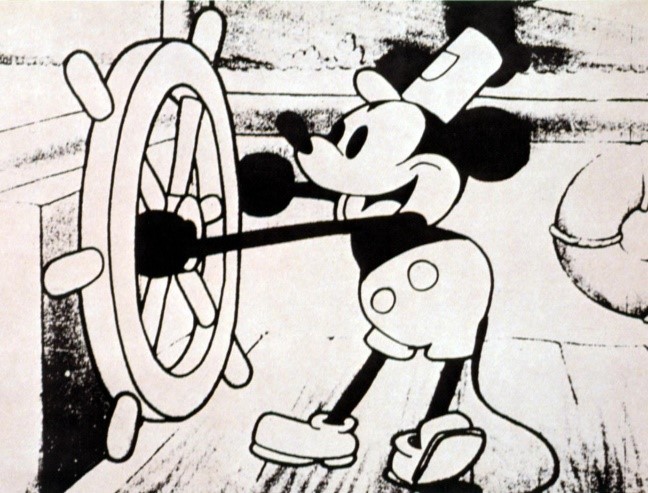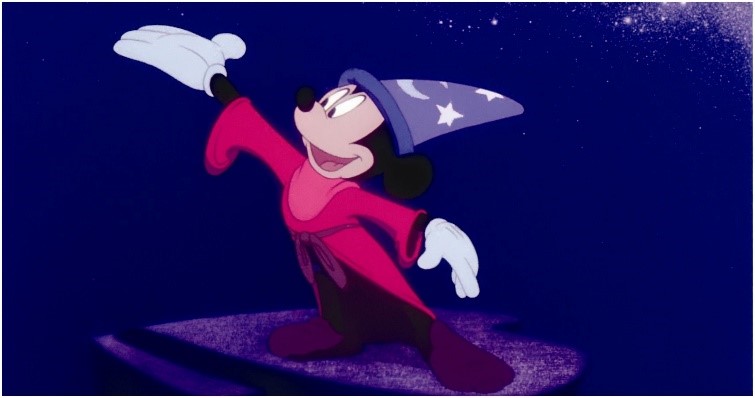Mickey Mouse in the Public Domain: Is the Mouse now Free?
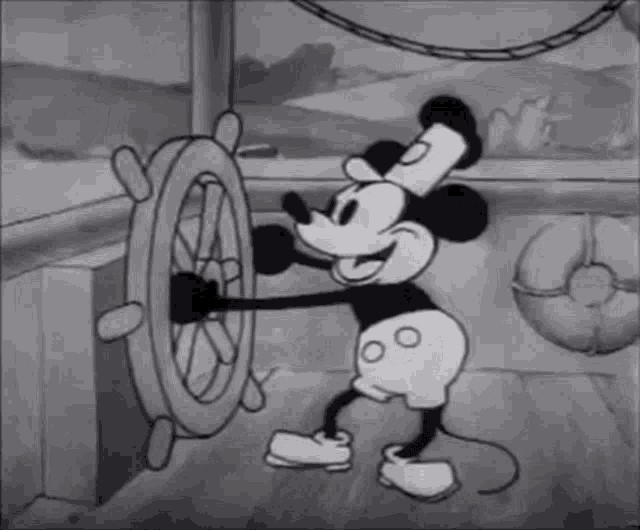
On 1 January 2024, the iconic Mickey Mouse imagery (or at least a version of it) finally entered the public domain in the United States after nearly a century of copyright protection.
To no one’s surprise, projects using Mickey Mouse images immediately started popping up as if on cue.
Two separate independent horror feature films featuring the mouse image have been announced[1], with a trailer dropping right on 1 January 2024[2] and an indie horror video game was announced[3], again with a trailer released on 1 January 2024[4].
Does this mean the Disney empire is finally losing control of the beloved mouse?
Perhaps not so fast. This article will examine the intricacies surrounding the intellectual property rights associated with Mickey Mouse.
So what is now free?
From the onset, it should be noted that only one aspect of the Mickey Mouse has changed. Namely the copyright status of the earliest version of Mickey Mouse in the US.
But first, it might be useful to take a brief detour at look at what copyright laws are supposed to do.
The primary purpose of copyright law is to encourage individuals to create new work by granting them a limited time during which they own exclusive economic rights (under the umbrella of “copyright”) to the work they have created.
Once the period expires, the work enters the “public domain”, meaning no one has exclusive copyright and the work is free for anyone to use.
While international treaties specify the minimum duration of copyright protection (also known as “copyright term”), there is no internationally prescribed maximum duration, which is left for individual states to decide.
In the United States, the copyright term for works has been changed multiple times, most notably in 1998.
This extension, lobbied for heavily by copyright holders, including Disney and sometimes derisively called the “Mickey Mouse Protection Act”, extended the copyright of most existing works by 20 years in the US, so work published before 1 January 1978 now enjoys a total copyright term of 95 years from first publication.
Mickey Mouse first appeared in an animated short film entitled Steamboat Willie, co-created by the late Walt Disney in 1928.
With the US extension, the copyright duration of Steamboat Willie was pushed to 31 Dec 2023.
This means the original Steamboat Willie film and, more significantly, the first public iterations of Mickey Mouse and Minnie Mouse appearing in it no longer enjoy copyright protection in the US[5].
This means anyone in the US is now free to copy, distribute, share and adapt Steamboat Willie and its characters without needing Disney’s consent.
Later versions of Mickey Mouse
But this doesn’t make it open season on the mouse.
Only the very first iteration of Mickey Mouse, as shown in Steamboat Willie, is in the public domain.
This version is, in fact, quite different from the version we commonly recognize as Mickey Mouse today.
For one thing, the Steamboat Willie version is entirely in black and white, and the classic white gloves are missing.
In fact, what we now commonly recognize as Mickey Mouse is more closely associated with the version depicted in the 1940 movie Fantasia, which will not enter the public domain for another 12 years.
This is an important point, as copyright can get murky when parts of works have gone into the public domain while other parts have not.
This is vividly demonstrated in a lawsuit brought by the estate of Arthur Conan Doyle against Netflix in 2019 over the depiction of Sherlock Holmes in the 2020 Netflix film Enola Holmes.
The estate argued that while most of the Sherlock Holmes stories had gone into the public domain, Doyle had developed “a warmer, more emotional, more respectful, and more altruistic character” in the last 10 Sherlock Holmes stories.
This warmer character, it was argued, was the one used in the Netflix Enola Holmes movie and those stories didn’t enter the public domain until 2022.
The lawsuit was eventually dismissed with both parties’ consent, indicating a possible settlement[8].
While there may be arguments those individual elements of Mickey Mouse like the red pants and white gloves, are not individually copyrightable[9], anyone using the more modern versions risks the wrath of the Magic Kingdom’s legal department.
Disney’s Trade Mark Rights
Perhaps even more important than the later iterations of Mickey Mouse, Disney owns a myriad of Mickey Mouse trademarks, including in the US alone:
- the words “MICKEY MOUSE”[10];
- the “classic” Mickey Mouse design “
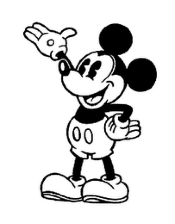 ”[11];
”[11]; - the colorized classic Mickey Mouse design “
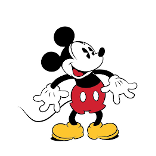 ”[12];
”[12]; - the modern Mickey House design “
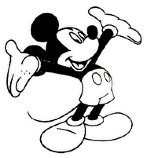 ”[13];
”[13]; - a composite mark depicting the “evolution” of Mickey Mouse over the years
“ ”[14];
”[14]; - a motion mark for Walt Disney Animation Studios incorporating clips of the Mickey Mouse in Steamboat Willie
“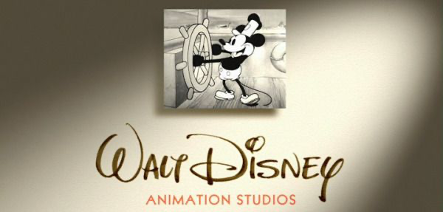 “[15].
“[15].
Unlike copyright, which aims to encourage creativity, trademarks aim to protect brands and consumers by preventing consumer confusion.
So long as a trade mark remains in commercial use and the owner pays renewal fees periodically, a trade mark can last indefinitely.
It is not uncommon to find trademarks which have been registered for over 100 years.
There is no rule against trademarking works protected by copyright.
Successful and recognizable cartoon characters like Mickey Mouse, Snoopy, and Hello Kitty) are often protected by both copyright and trade mark laws.
It is also not uncommon for right holders to try to enforce at least some of the rights in expired copyright works through trademarks.
For example, the Doyle estate also made trade mark infringement claims against Netflix in the Enola Holmes case.
While trademark rights are not direct substitutes for copyright; as the trademark owner, Disney can still protect the use of Mickey Mouse and its imagery as a brand identifier.
Any commercial use of Mickey Mouse imagery on goods or services could give rise to the impression those goods and services come from or are approved by Disney, making them firmly off-limits thanks to the Disney trademarks.
So, Where Do The 2024 Projects Stand?
All the latest projects that have popped up surrounding Steamboat Willie adhere closely to the Steamboat Willie version of the mouse, for example, using a strictly black-and-white design and taking steps, like including disclaimers, to distance themselves from Disney.
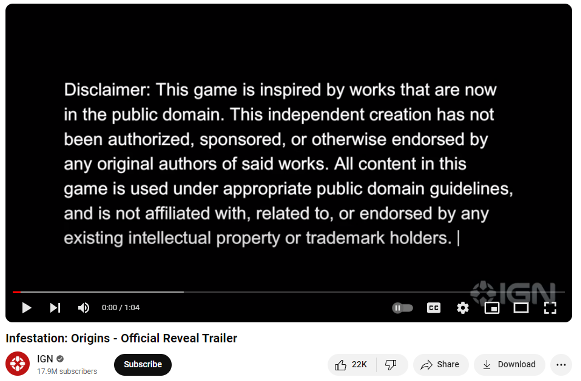
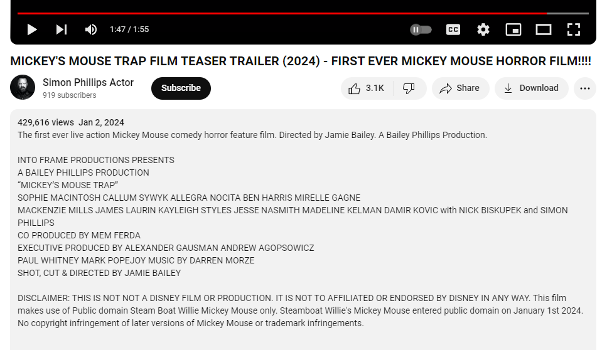
While Disney may not be looking to take immediate action, this may not be enough.
Future Crackdown?
Disney also said in a public statement, “will, of course, continue to protect our rights in the more modern versions of Mickey Mouse and other works that remain subject to copyright, and we will work to safeguard against consumer confusion caused by unauthorized uses of Mickey and our other iconic characters.”[16].
The comment about “consumer confusion” clearly states Disney will continue to use trademark laws to stop the potential unauthorized use of Mickey Mouse and similar characters.
So, while individuals can nominally use and adopt the Steamboat Willie version of Mickey Mouse as they want, doing so could mean walking a legal tightrope.
A few months from now, it’s quite possible Disney might pick and choose a few marginal cases to publicly crackdown and flex its intellectual property muscles to remind the public to tread carefully.
So don’t expect to see any Steamboat Willie-themed merchandise on the shelves any time soon.
The Mouse can rest easy in the Magic Kingdom knowing that, public domain or not, its future with Disney is secure.
About the Author:
Anthony is an intellectual property and commercial specialist at Haldanes and has written extensively on key issues.

On 1 January 2024, the iconic Mickey Mouse imagery (or at least a version of it) finally entered the public domain in the United States after nearly a century of copyright protection.
Haldanes Associate Anthony Leung discusses what this means regarding copyright and asks, is the Mouse now free?
[1] Mickey’s Mouse Trap: https://www.imdb.com/title/tt30743549/; Untitled Steamboat Willie horror film: https://www.imdb.com/title/tt30766582/
[2] https://www.youtube.com/watch?v=jVjt52sOs6g&t=11s
[3] Infestation Origins: https://store.steampowered.com/app/2635640/Infestation_Origins/
[4] https://www.youtube.com/watch?v=Qe85jZhSflk
[5] It should however be note that copyright term varies across countries: The copyright of Steamboat Willie has already long expired in Hong Kong; whereas it is still within its terms in some countries with longer copyright duration such as Mexico.
[6] Retrieved from Forbes at https://www.forbes.com/sites/danidiplacido/2024/01/04/the-steamboat-willie-mickey-mouse-situation-explained/?sh=4971859b2bc8
[7] As retrieved from Disney at https://movies.disney.com/fantasia
[9] Please see the arguments of Professor Jennifer Jenkins of Duke Center for the Study of the Public Domain in Mickey, Disney, and the Public Domain: a 95-year Love Triangle at https://web.law.duke.edu/cspd/mickey/
[10] Numerous, including US Reg. No. 1152389
[11] US Reg. No. 5027914; No. 7242628
[12] Numerous, including US Reg. No. 7184909
[13] US Reg. No. 1857626;
[14] US Reg. No. 5464657
[15] US Reg. No. 6846660; a clip of the motion mark can be found on https://www.youtube.com/watch?v=uK7HoALmvYw
[16] https://fortune.com/2023/12/23/disney-mickey-mouse-copyright-public-domain-steamboat-willie/
